We I was very small going even a few house from home was a big adventure, I never knew what I would come across. I would walk up the lane with the big fences, past the garage at the corner and the decide which direction to turn. I would walk to the next block and turn and by the time I pasted the second white house I would want to go home. There I found a most peculiar plant with flowers that looked like hearts suspended which were on slender branches amongst the tender green leaves. Never knew such a beautiful plant existed and was in love with it instantly. Bleeding Hearts (Laprocapnos spectabilis) have been in my heart since that time and definitely piqued my curiosity about plants in a way that insured gardens would be a central feature in my life.
Whats this you say, I know this plant to be a Dicentra spectabilis…and what is this silly name you are now calling it Lamprocapnos spectabilis ?. Yes it is true the name has changed and just recently and we can thank our ability to see plants at a molecular level know so we change their family based on their genetic make up. The original study appears to have been done in 1997 and the acceptance of the new name was accepted in late August 2006. this is not the first name change, originally it was classed as a Fumaria and later as a Dielytra. As for the common name, take your pick of : Bleeding Heart, Venus’s Car, Lady’s Locket, Lyre Flower, Tearing Hearts, Our Lady in a Boat, Chinese Pants and the list goes on.

The brightly colored stems of Bleeding Heart (Lamprocapnos spectabilis) in the spring add excitement to the garden, you know something wonderful is on the way.
Bleeding Hearts were first mentioned in “Vollstandige Lexicon der Gartneri und Botanik’ (1804) a book written by German Botanist Friedrich Gottlieb Dietrich(1765-1850). He was the designer and director of the Botanical Gardens in Eisenach and Wilhelmstal. During his lifetime he taught botany ,collected plants mainly in the Alps and was a Professor of Botany. With his access to the gardens he was able to see many of the new plants be sent from other parts of the world to be catalogued. From the original mention of Bleeding Heart (listed as Fumaria) in 1804 it seems the plant was not long-lived. It was introduced into english gardens in 1812 with the same short-lived results.

The sublimely beautiful Lamprocapnos spectabilis 'Alba' (White Bleeding Heart) is a more delicate plant than the more common pink variety.
In 1846 Robert Fortune (plant explorer extraordinaire) purchased a live Bleeding Heart plant at a nursery in Shanghai China and sent it back to Kew with a note saying that he thought this plant would become very popular with gardeners. within 5 year the plants were being sent to continental Europe and North America and were well-distributed in Great Britain. It was such a hit that by the end of the 19th century it was seen as being a ‘cheap’ (as in common but very charming.) although William Robinson saw its beauty describing the flowers as ‘resembling rosy hearts’ (that are) ‘in strings of a dozen or more gracefully borne on slender stalks’ (and) having ‘remarkable beauty’.

The delicate foliage of Lamprocapnos spectabilis (Bleeding Heart) is a perfect foil for more solid plants and structures like this bench.
Lamprocapnos spectabilis (Bleeding Heart) is from asia but is found in a wide range ; from Siberia through Korea into Japan and south into China. It is not common anywhere in the wild. It would be found in fairly low to quite high elevations from 30 -2400 m.(100 – 7900 ft.). With this diversity of range it is not surprising to find it is quite hardy surviving -40 c and f. tempetures (zone 3 where I spotted my first plant as a small child). An added benefit is that these plants are deer and rabbit resistant and should be used by gardeners who have these problems.
Growing a Bleeding Heart is easy; you will need rich humusy moisture retentive soil, dappled exposure and a site which offers protection from winds which can damage the foliage and blooms. The plants if they are happy with produce a large vigorous clump which produces dense roots. They grow to be about 1 m.(3 ft.) high by about the same wide. Plants do have brittle roots so care should be taken when planting near its base. These plants are easily divided in autumn or early spring, growing them from seed is somewhat tricky as it has to be sown as soon as it ripens. There are several forms you might be interested in buying, my favourite is the glistening white Lamprocapnos spectabilis ‘Alba’ which has beautifully green leaves. You might prefer ‘Gold Heart’ although I find the golden chartreuse foliage clashes with the pink flowers. A new addition is Valentine’ which has deeper, richer colored flowers.

This collection of Laprocapnos spectabilis was a single plant last year and is happliy growing in its new location.
For the most part Lamprocapnos spectabilis is a carefree plant with few pests other that the odd aphid or slug slimming around. Often plants get messy looking after they bloom, you can cut them down to 15 cm. (6 in.) and they will regrow with new vigour and often will produce a smaller crop of flowers in late summer or autumn. Late autumn offer up golden tones which are appreciated. This plant can be used in a variety of ways; it is often a foil for bold foliage and mixes well with the more dainty ferns. It is used as an accent, specimen, in shade and woodland gardens, in perennial borders for spring interest.
Dissecting Lamprocapnos(Dicentra):
Paghats article on the plant: http://www.paghat.com/bleedingheart.html
ARS-GRIN page on the new name: http://www.ars-grin.gov/cgi-bin/npgs/html/taxon.pl?408089
In Wiki you will encounter the name change: http://en.wikipedia.org/wiki/Lamprocapnos_spectabilis
……………Hope you don’t change your mind and decide to leave soon………….








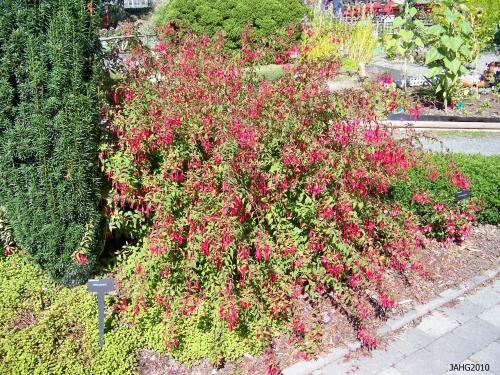
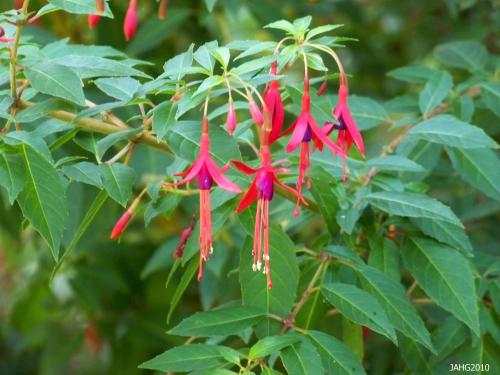
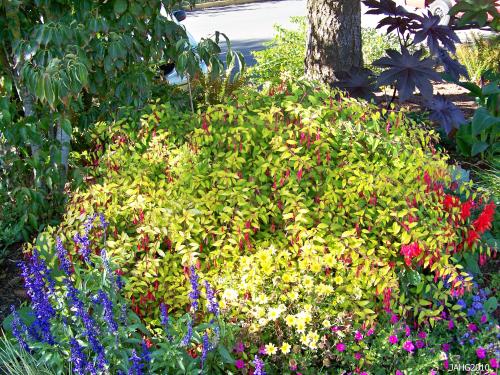
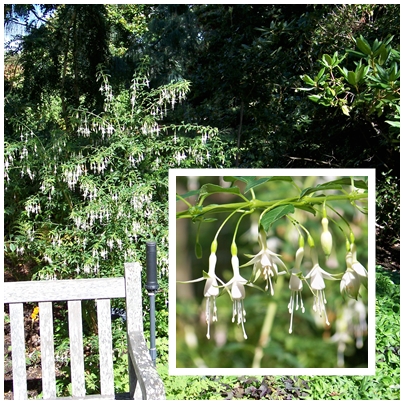
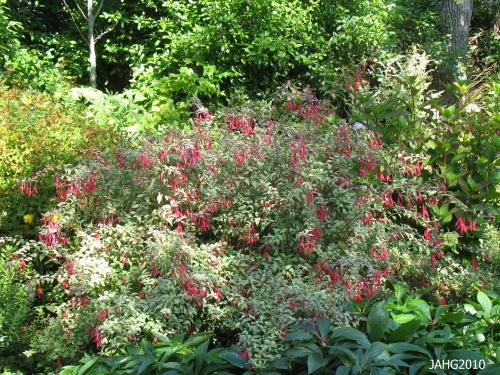


















































 Stumble It!
Stumble It!






